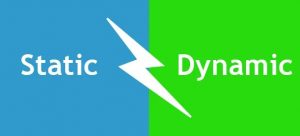-
31
Jan
Dynamic LTL Pricing. What is it??

One of the hot topics at SMC3’s Jumpstart January 2022 conference was Dynamic LTL Pricing. So what is Dynamic LTL Pricing?
Dynamic LTL Pricing IS NOT lane specials where additional discounts are offered on top of the traditional published price for specific lanes on specific days. Those adjustments only work in one direction (downward), and only work on top of the traditional LTL program in place.
Dynamic LT Pricing IS profile-based pricing that uses shipment, lane, and customer attributes to craft a unique one-time price. That price is not based upon a traditional LTL pricing structure (base rate, discount, class), and can go both up or down day to day as the carrier considers the impact of all attributes. It considers that actual factors that affect LTL carrier costs, rather than complicated proxies like NMF classifications. The most common attributes used are handling unit weight and dimensions, and piece count. Other attributes include day of week, season, end of quarter, origin, destination, pass-through terminals, customer dwell (delay) times, and customer payment rate.
Some, but not all, shippers like Dynamic Pricing because it provides for optimized (lower cost) lane selection and access to additional capacity. While there is concern that Dymamic Pricing is difficult to forecast, many agree traditional LTL pricing has been equally difficult to forecast of late. And many shippers prefer a pricing program that does not involve complicated rules tariffs and NMFC classification know-how. In theory, if the shipper provides accurate profile information on the BOL and the quote, the invoice will match every time. What a novel concept, right?
Carriers like Dynamic Pricing because it provides them levers to control freight flow on both an overall and at specific granular levels. Rather than waiting for traditional pricing timetables to adjust for freight mix and lane changes, carriers can literally adjust overnight. It allows for a more-optimized network, targeting the exact profiles of freight that each carrier wants, with those savings potentially trickling back down to customers. And it reduces administrative costs, particularly as Electronic Bills of Lading are deployed.
3PLs like Dynamic Pricing for much the same reason that shippers do. It gives them simplified options for newer customers and those frustrated by traditional LTL pricing. It gives their customers better access to capacity and a better price. And it can help strengthen the 3PL-carrier relationship.
LTL shippers large and small should definitely consider Dynamic LTL Pricing. Ask your carrier base what they are doing, or ask your 3PL what they are seeing and hearing. Every carrier will have a different take on how they will use this emerging mechanism.
In the meantime, I’d like to hear what you think about Dynamic LTL Pricing, from the perspective of shippers, carriers, and 3PLs. What say you?
- (479) 461-1672
- Contact Us
